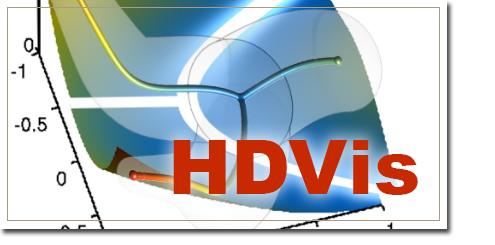 |
Visualization of High Dimensional Scalar Functions Download Source |
Publication
Samuel Gerber, Peer-Timo Bremer, Valerio Pascucci, Ross Whitaker, "Visual Exploration of High Dimensional Scalar Functions", IEEE Transactions on Visualization and Computer Graphics to appear, Proceedings of VIS 2010.
Full Publication
